How to Use The 'PPL’ Method to Build Full-Body Muscle, Fast
When it comes to building strength and gaining muscle, it can be easy to get lost in the reams and reams of conflicting advice and suspect training personalities on social media. With a myriad of workout splits, dietary advice, and gym hacks published hourly, the noise can be deafening, especially when you're reliant on reputable fitness advice. Take a cruise through any bodybuilding forum or training and blog, however, and you'll likely come across one common training method that is validated by almost everyone: push, pull, legs (PPL).
Like its name, the methodology of push, pull, legs is a simple one, and it suits almost everyone in the weights room, from motivated and green lifters to the calloused gym regulars looking to bust through a training plateau. So, if you're looking to give it a shot, you've come to the right place. First things first...
What is ‘Push, Pull, Legs’?
It's a full-body training split that's designed to build muscle in almost every single muscle group by following a simple format: on a certain day of the week, you only train either upper-body pushing muscles (push), upper-body pulling muscles (pull), or your entire lower-body (legs).

Typically, push, pull, legs follows an alternating format, helping each muscle group receive adequate recovery time between sessions. Ideally, you'll hit each session twice weekly, but once a week could be adequate for relatively inexperienced gym-goers (more on that below). An example split would be:
Day #1, Push: Chest, shoulders, triceps
Day #2, Pull: Back, traps, biceps
Day #3: Legs: Legs, glutes and abs
Day #4, Push: Chest, shoulders, triceps
Day #5, Pull: Back, traps, biceps
Day #6, Legs: Legs, glutes and abs
Most push, pull, legs routines will be focused around compound moves — exercises that recruit multiple muscle groups — to provide maximum bang-for-your-buck potential.
'Push, pull, legs is a training split that's generally split over three or six days,' explains Third Space Elite Trainer and Education Co-ordinator Tom Hall. 'You can do three days — one push-dominant exercises, one pull-dominant exercises and one all leg-dominant exercises and, if you really want to, you can cycle this into six days [per week] and cycle this, doing each day twice.'

Push, Pull, Legs: An Expert’s Opinion
Now that you're au-fait with the push, pull, legs methodology, let's start to unpack what makes it so popular. 'The effectiveness comes from [training] six days a week, especially if you're bodybuilding, so you can hit the muscle groups more frequently,' Hall explains. 'The training split allows you to just to focus on certain movement patterns, including using vertical and horizontal pushes or pulls in the same session and training your posterior and anterior chains in your legs during another session.'
Is Push Pull Legs Actually Good?
'The major benefit is that PPL is simple. Everything you push, you do on one day, everything you pull, you do on another. Everything with your legs, you do with another,' Hall explains. 'It categorises movement properly, too, so that you think about movement over muscle groups.'
Who Should Avoid Push, Pull, Legs?
By this point it should be clear that there are plentiful benefits to a push, pull, legs training split. But, crucially, that doesn't mean it's a one-size-fits-all training plan. Instead, those looking to train using the PPL split should first take a beat to figure out what their schedule, equipment access and individual fitness level allows for. 'Even three days a week could be a stretch. In that case, you may want to do full-body. If you're time-poor, don't do it. PPL is for people who can get in three to six sessions in a week.'
What Are the Limitations of Push, Pull, Legs?
While PPL is one of most frequently used and beneficial systems out there, there are limitations for experienced lifters or those who are short on time. Some may find the programme isn't advanced or specialised enough. Those who want to advance specific lifts may require more rest and recovery. However, as with all training programmes, they should be adjusted to suit your individual needs so that you can get the best results.
These limitations are noted by exercise researcher Dr. Milo Wolf, 'It's only for those who are consistently training six days a week or more. Because otherwise you're missing out on training each muscle twice a week. For you to train each muscle twice a week, you need two full rotations of the push pull legs sequence.'
The researcher adds, 'A body part split can work but you need to be smart about it. Essentially you need to make sure you're making those modifications to your routine to ensure each muscle is trained at least twice a week.'
Ideally, if you're short on time, full body splits three times a week would be preferential over push, pull, legs three days a week.
Best Exercises for Push, Pull, Legs Workout
Ready to commit? There's more to PPL than stringing a group of exercises together for an hour and hoping for rapid muscle-gain. Instead, utilise Hall's crib sheet below for an easy-to-digest guide to training with push, pull, legs.
Best Push Exercises for PPL
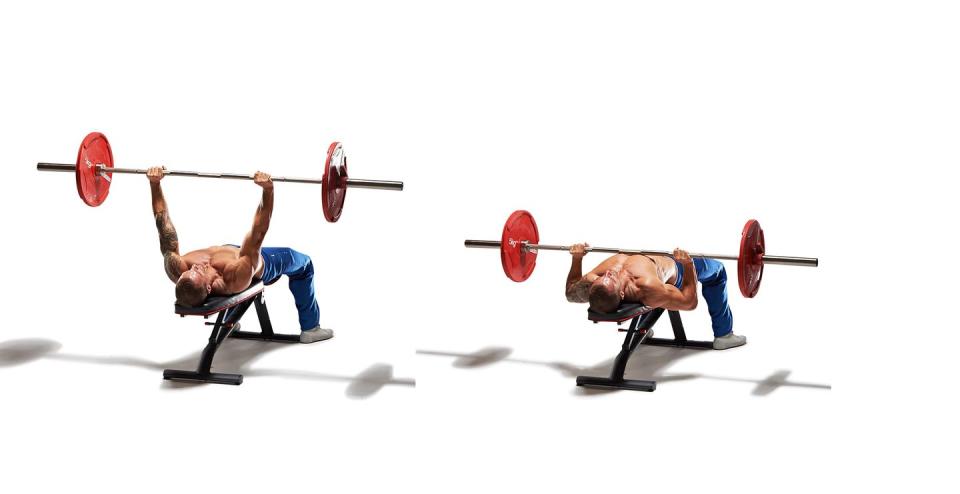
Bench Press
Lie back on a flat bench holding a barbell in the rack above you with a shoulder-width, overhand grip.
Drive your feet into the floor to contract your quads and glutes, and clamp back your shoulder blades to shorten the weight's path of travel. This increases neural drive to your chest, delts and triceps
Lift the bar off the rack and position it above your chest with arms fully extended.
From the starting position, breathe in and lower the bar slowly until it skims the middle of your chest.
Focus your mind on activating your chest muscles and push the bar back to the starting position explosively as you breathe out. That’s one rep.

Dumbbell Bench Press
Lie on a flat bench with the dumbbells up above your chest with the arms straight and the palms facing away from you.
Lower the dumbbells either side of your chest, at 45 degrees below your shoulders.
Feel a stretch across your chest before pushing the dumbbells away from you, ready to repeat.
MH Tip: To bring the dumbbells down safely, rest the dumbbells on your thighs and bring your body upright and to place them down.
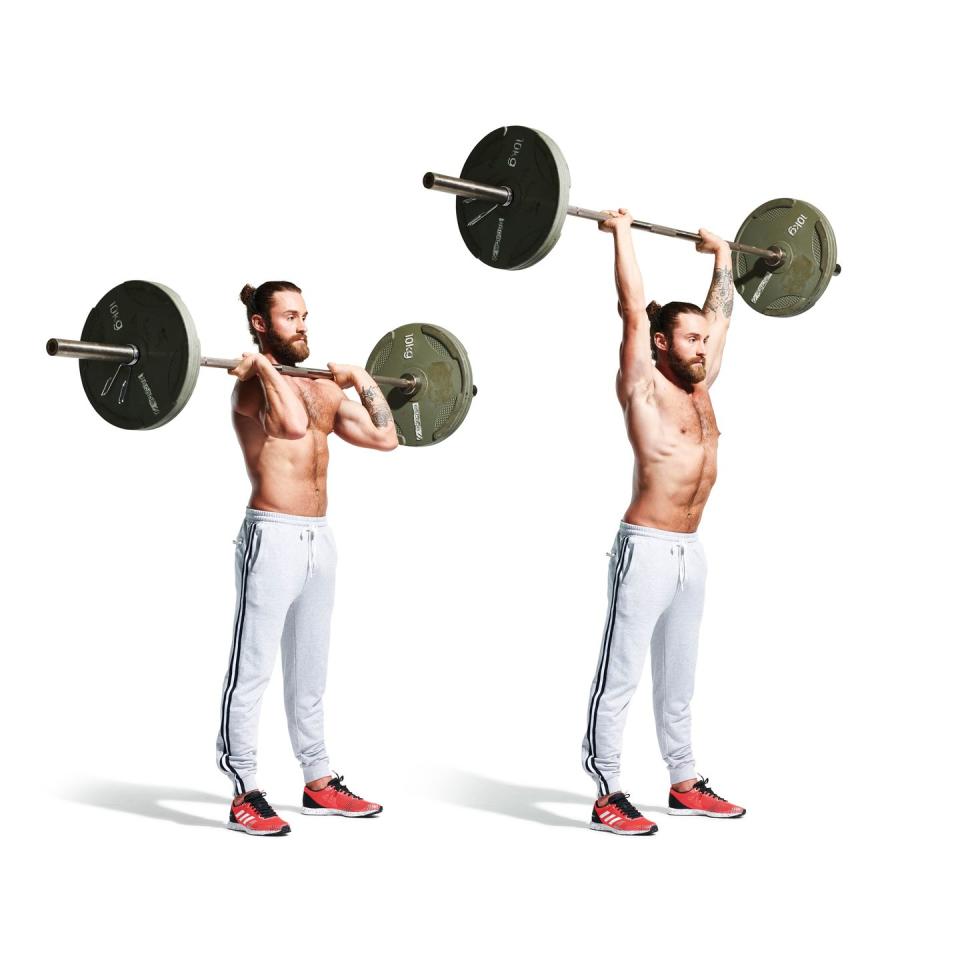
Overhead Press
1. Position your feet close together and lift the barbell up to your shoulders, palms facing forward.
2. Press the barbell above your head explosively until your arms are fully extended, then lower the weight under control.
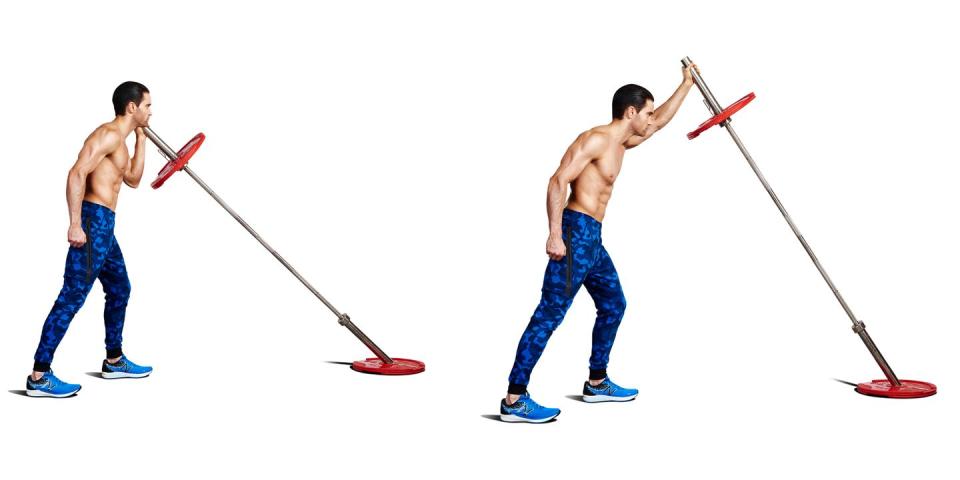
Landmine Press
Raise the barbell to shoulder height, with the other arm extended at your side and feet in a staggered stance.
Explosively press the weight up and out in front of you. With the weight shifted to one side of your body, your obliques will be working hard to keep you straight.
Pause, then slowly return the bar to shoulder height.
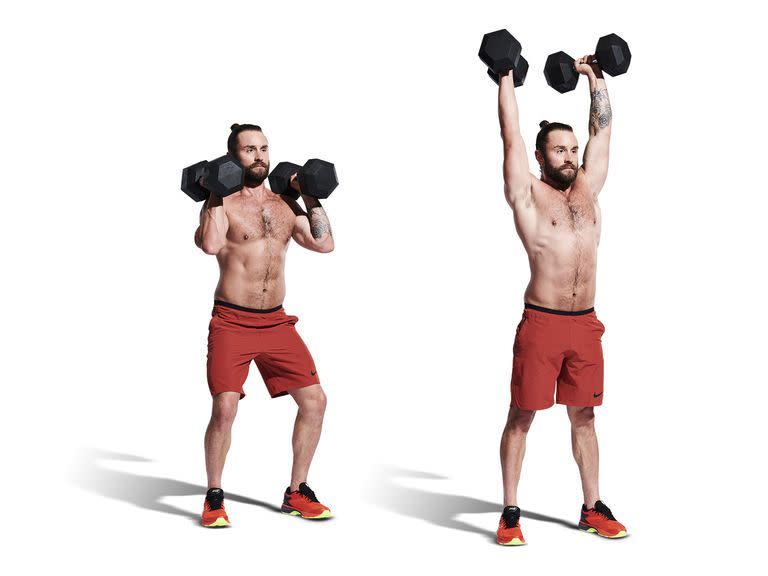
Push Press
With your dumbbells on your shoulders, palms facing in, take a breath and brace your core.
Dip at the knees and use your legs to help press your dumbbells overhead. Lower under control to your shoulders and repeat.
Best Pull Exercises for PPL
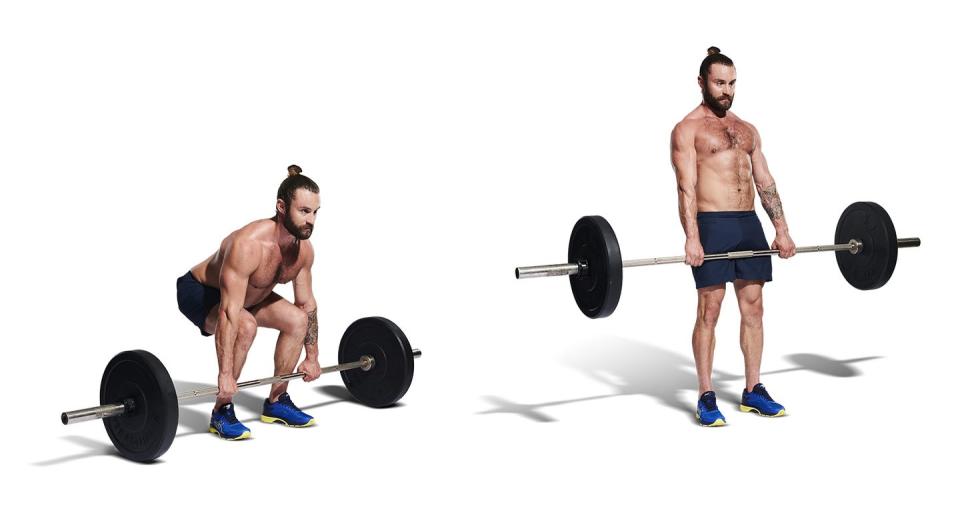
Deadlift
Squat down and grasp a barbell with your hands roughly shoulder-width apart. Keep your chest up, pull your shoulders back and look straight ahead as you lift the bar.
Focus on taking the weight back onto your heels and keep the bar as close as possible to your body at all times.
Lift to thigh level, pause, then return under control to the start position.
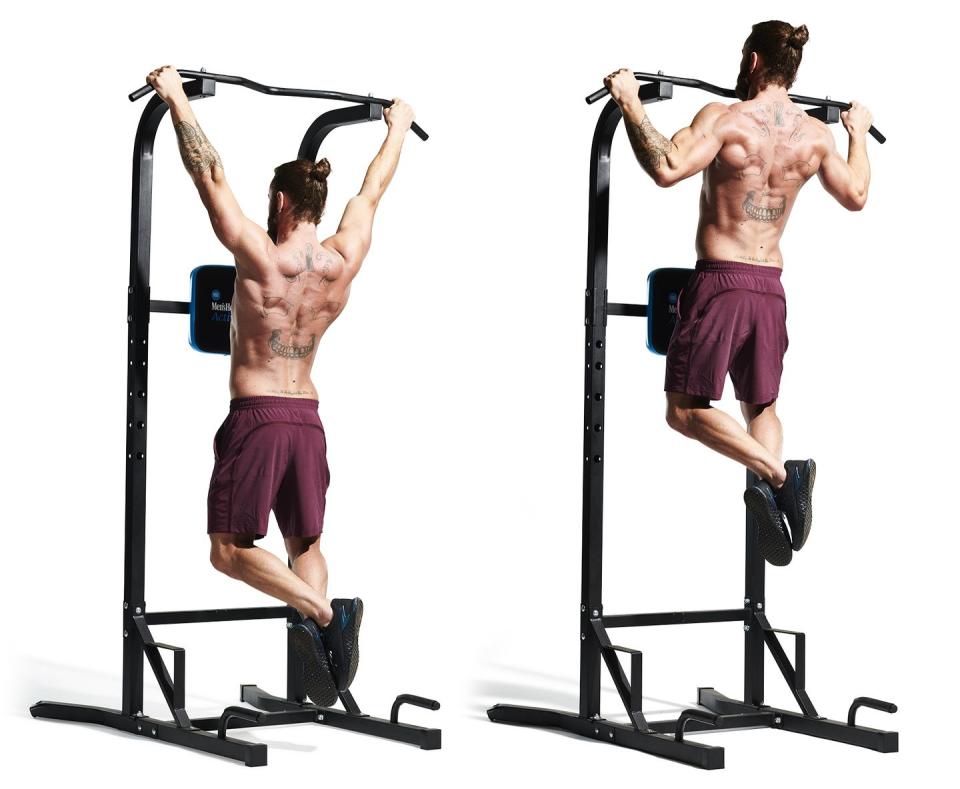
Pull-Ups
Grab the handles of the pull-up station with your palms facing away from you and your arms fully extended.
Your hands should be around shoulder-width apart. Squeeze your shoulder blades together, exhale and drive your elbows towards your hips to bring your chin above the bar. Lower under control back to the start position.
MH Tip: Lock your body straight and drive your elbows back as you pull to engage your lats.

Lat Pull-Downs
Kneel in front of the cable machine and face away. Grab the bar with your palms facing away from you, shoulder-width apart.
Lean back slightly and push your chest out. Pull the bar down to your chest, then return slowly to the start position. Your torso should remain still throughout.
As with all pulling movements, your grip is likely to be biggest limiting factor for this exercise. Once your grip goes, drop the weight to keep challenging your lat muscles and building your back.

Head to a flat bench and place your right hand against it under your shoulder, keeping your arm straight.
Rest your right knee on the bench and step your other leg out to the side. With your free hand grab a dumbbell off the floor and row it up to your side until your upper arm is parallel with the floor. Lower slowly back to the floor and repeat.
MH Tip: Lock your torso and pull your shoulder blade back with each rep to ensure your lats are engaged. If you're struggling to feel your back working and instead feel your biceps predominantly taking over, loosen your grip on the dumbbell.
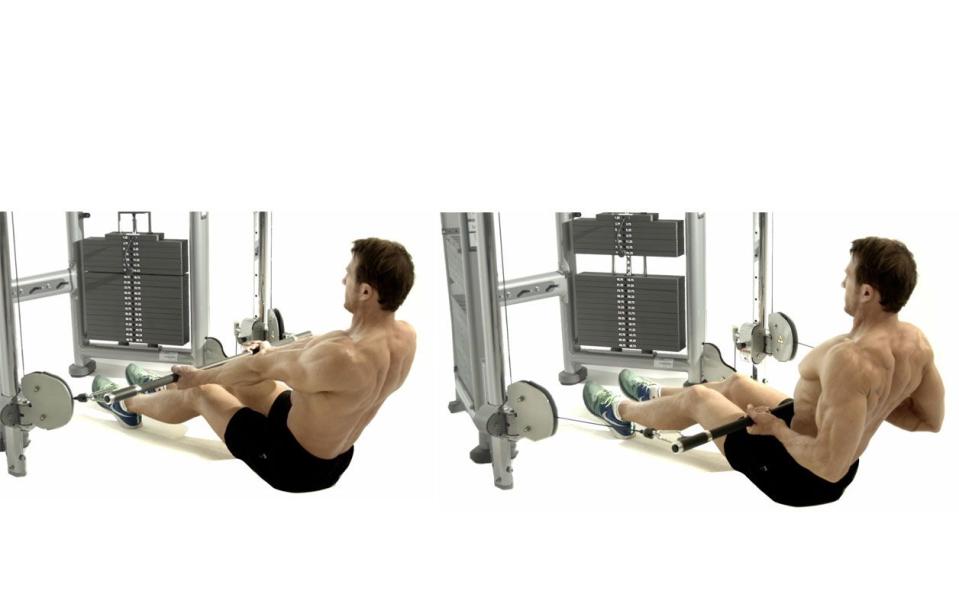
Cable Rows
Grab the bar at the cable machine with an overhand grip, hands wider than shoulder width apart.
With your legs slightly bent, keep your back perfectly straight and bend forward at the hips until your torso is almost parallel with the floor.
From here, row the weight upwards into the lower part of your chest, then lower under control.
MH Tip: Focus on squeezing your shoulder blades together as if you're squeezing a tennis ball between them with each rep.
Best Leg Exercises for PPL
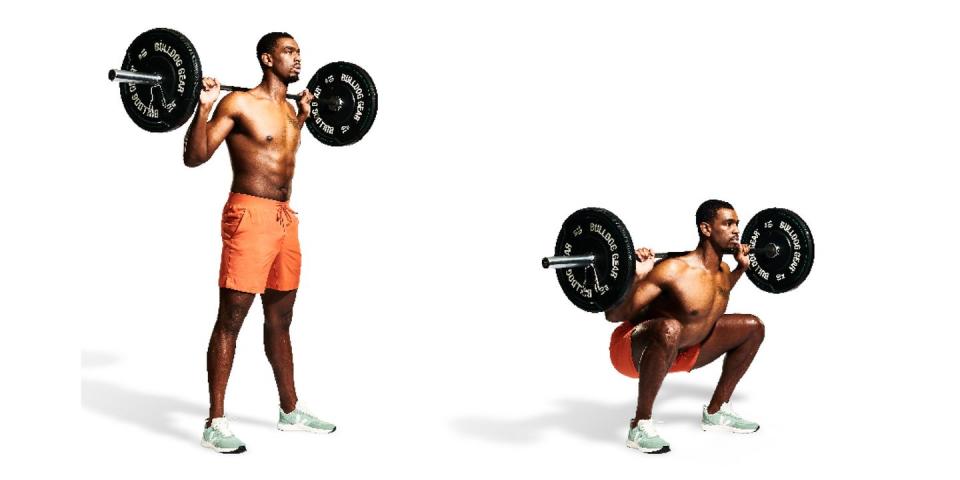
Barbell Back Squats
Stand with your feet more than shoulder-width apart and hold a barbell across your upper back with an overhand grip – avoid resting it on your neck. Hug the bar into your traps to engage your upper back muscles.
Slowly sit back into a squat with head up, back straight and backside out. Lower until your hips are aligned with your knees, with your legs at 90 degrees – a deeper squat will be more beneficial but get the strength and flexibility first.
Drive your heels into the floor to push yourself explosively back up. Keep form until you’re stood up straight: that’s one
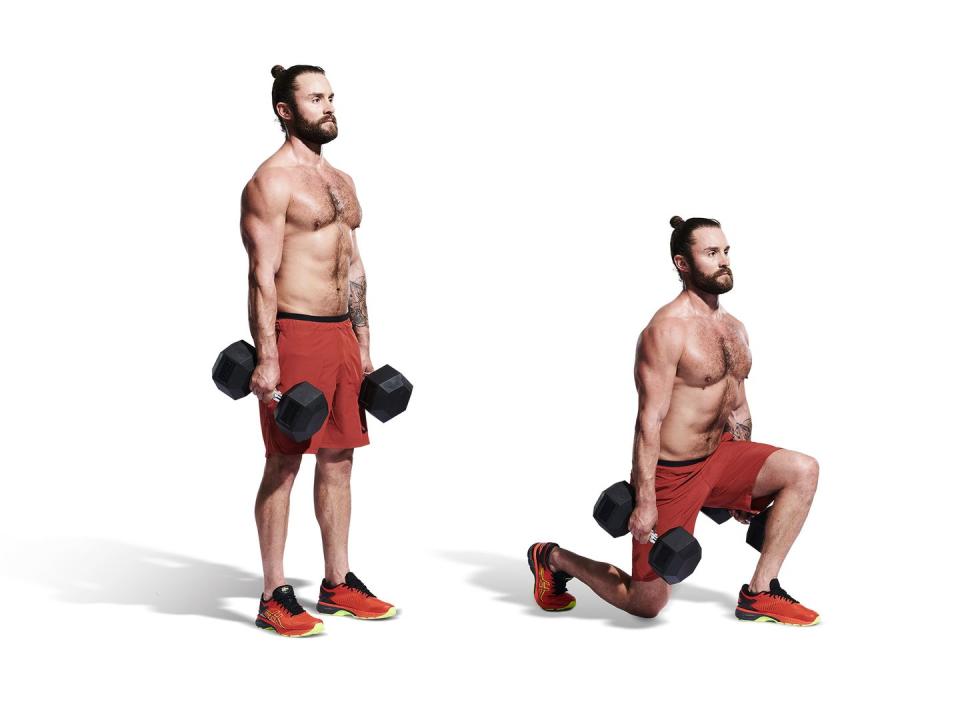
Keeping your chest up at all times, take a step backward with one leg, bending your front knee until the back knee touches the ground.
Stand up explosively, pause and repeat with the other leg. Complete 12 total reps.
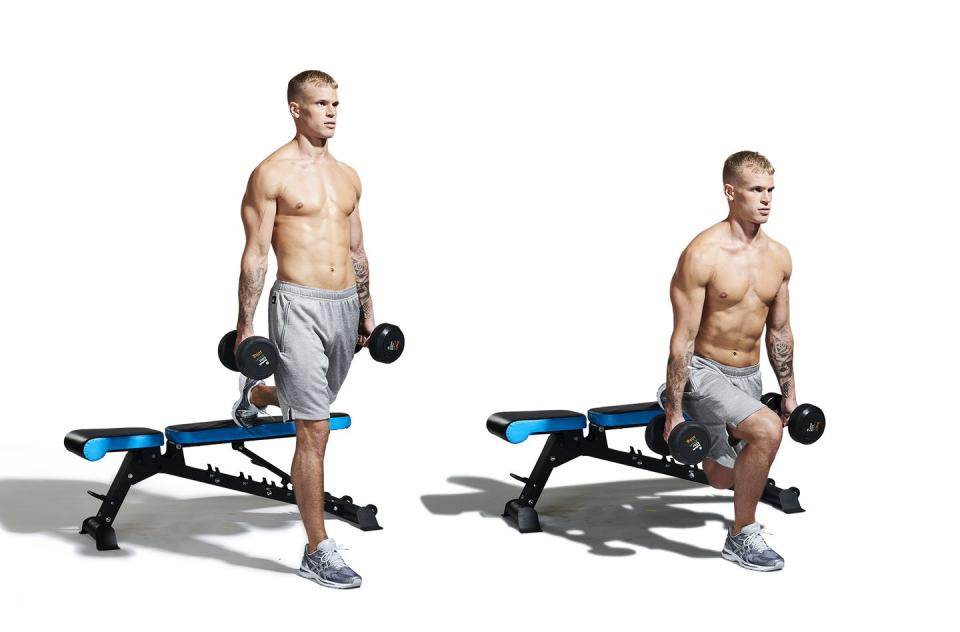
Bulgarian Split Squat
Stand facing away from a bench with one leg resting on it, laces down. Squat down with your standing leg until the knee of your trailing leg almost touches the floor.
Push up through your front foot to return to the start position.
MH Tip: Keep your weight in the heel of your front foot and ensure your knee tracks over your toes.
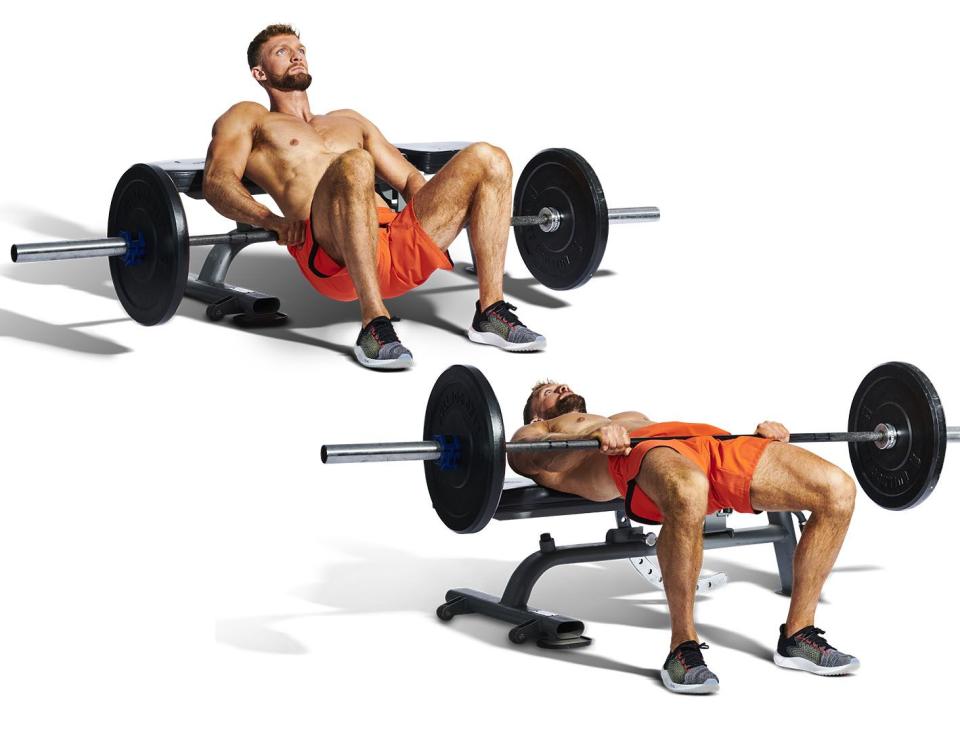
Hip Thrust
Sit on the ground with a barbell over your legs. Roll the bar so that it is directly above your hips, then lie so your back's flat against the floor.
Drive through your heels to lift the bar, focusing on tightening your glutes so your hips move straight up, and the weight is supported by your heels and upper back.
Pause, then lower the weight under control.
MH Tip: Adjust the foot position to suit where you feel your glutes are working most. Further away and you'll likely feel more hamstrings, closer to you and you'll likely feel more quad – in the middle should be the sweet spot.
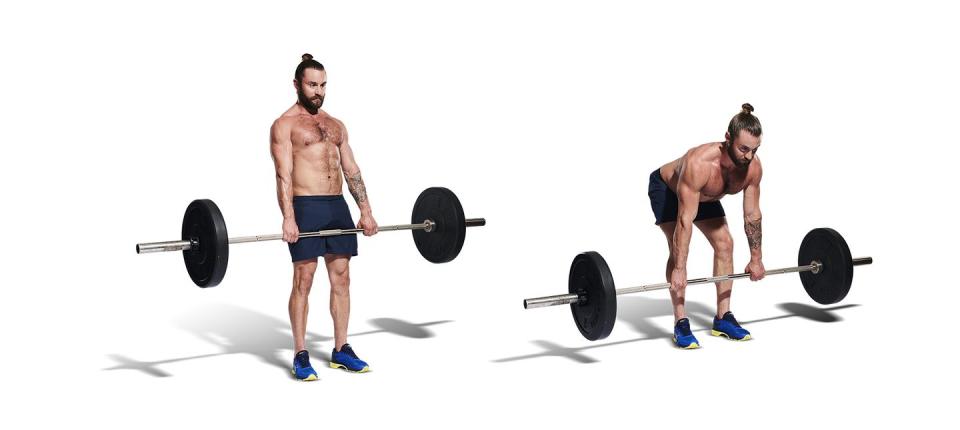
Romanian Deadlifts
Hold the barbell in front of your thighs, and lower to the ground by pushing your hips back.
As you lower the weight, keep your shoulder blades drawn towards each other and your chest open and wide.
When the weight is below your knees, thrust your hips forward and return to the starting position.

Kettlebell Swing
Place a kettlebell a couple of feet in front of you. Stand with your feet slightly wider than shoulder-width apart and bend your knees to lean forward and grab the handle with both hands.
With your back flat, engage your lats to pull the weight between your legs (be careful with how deep you swing) then drive your hips forward and explosively pull the kettlebell up to shoulder height with your arms straight in front of you.
Return to the start position and repeat without pauses.
MH Tip: Your knees should bend slightly but most of the movement is driven by your hips snapping forward.
The Best Methods for Building Muscle
Here are 10 of the best workouts using methods and protocols to supercharge your hypertrophic efforts:
Long-Length Partials: The Partial Rep Intensity Technique to Supersize Your Gains
Use ‘Forced Negatives’ to Train Beyond Failure for Muscle Growth
Use The 'Doublé' Method To Bring Up Lagging Body Parts and Fix Weak Lifts
Use the Rest-Pause-Isolation Method for New Muscle Growth and a Balanced Physique
Use the '6-12-25 Shock Method' for Fast Muscle Growth and a Massive Pump
The Hepburn Method: The Ultimate Powerbuilding Tool for Building Strength and Size
The 5/3/1 Powerlifting Method for Massive Lifts and Huge Strength Gains
You Might Also Like


